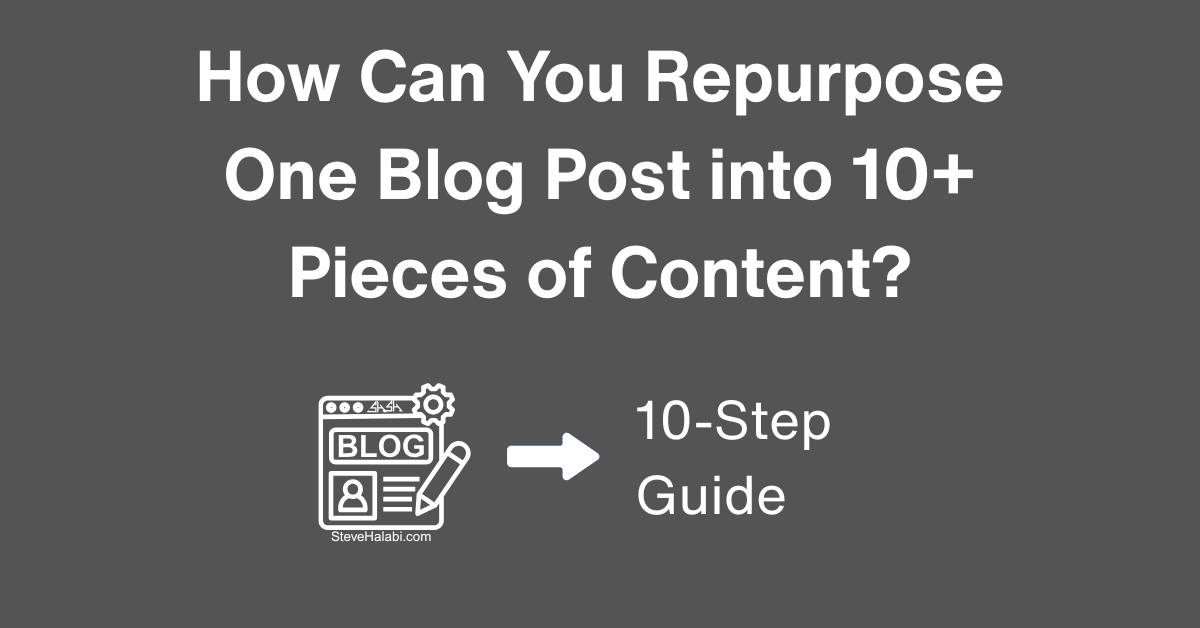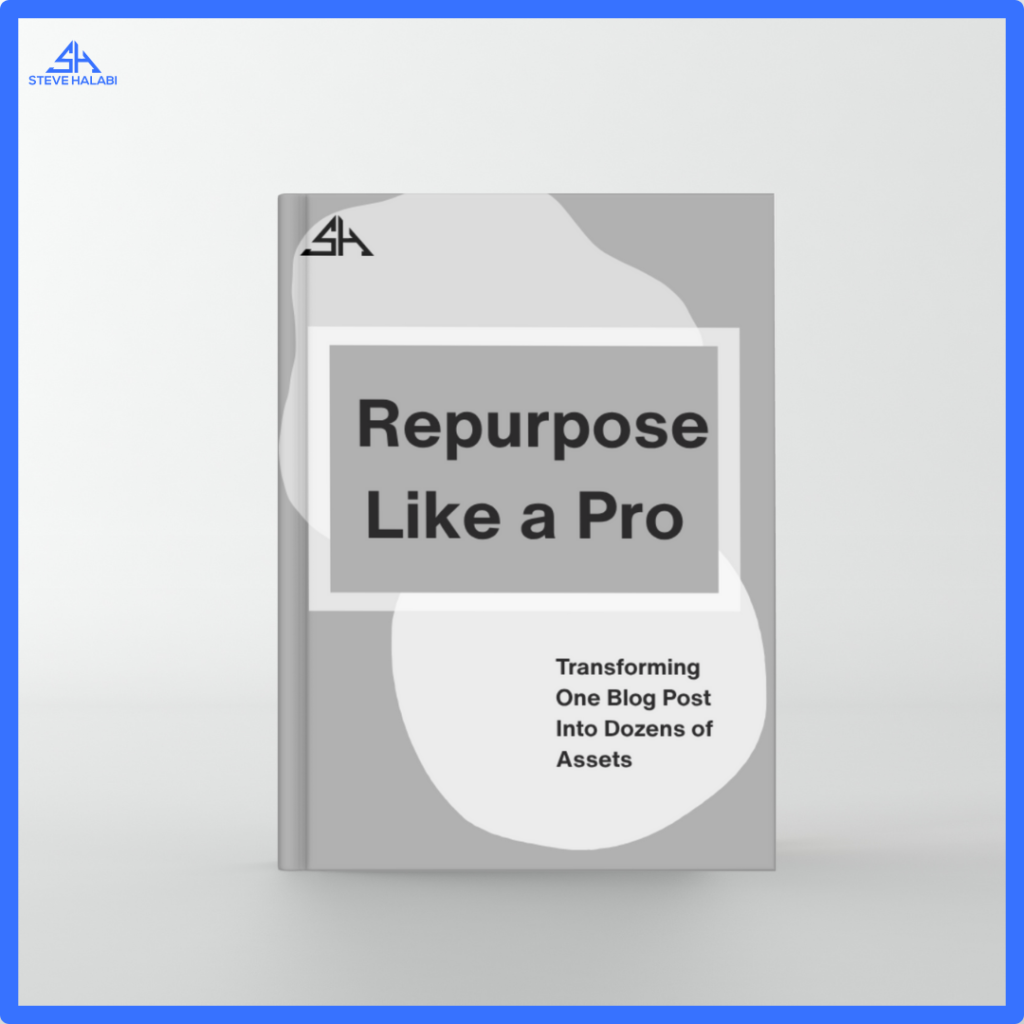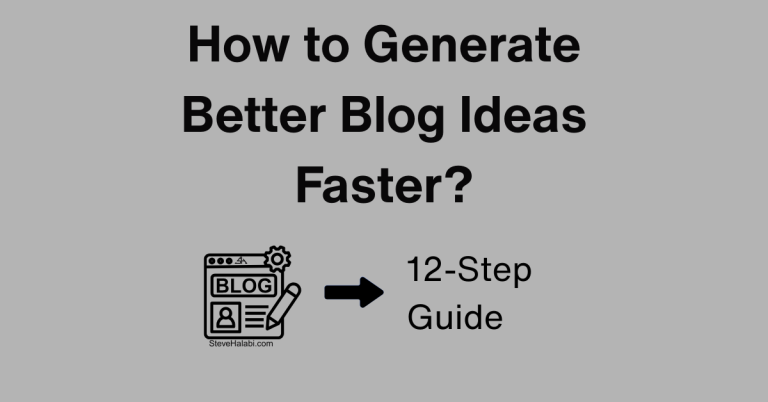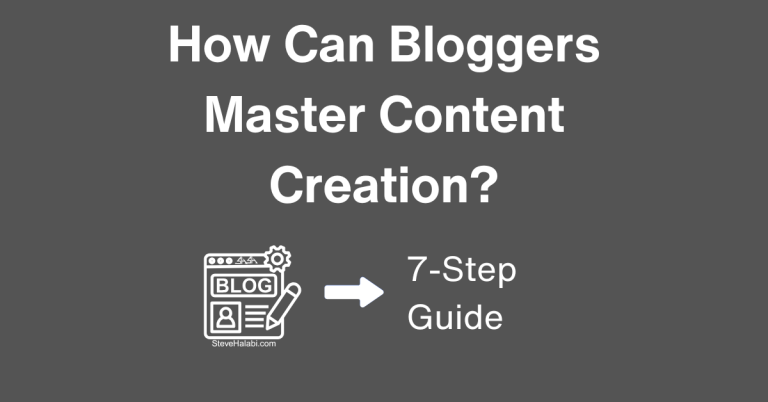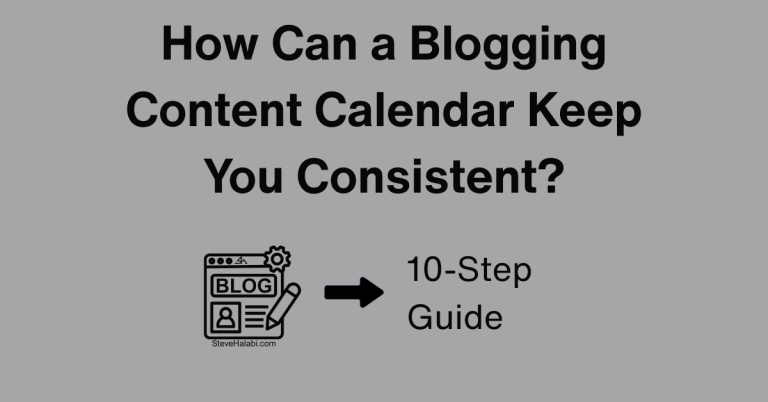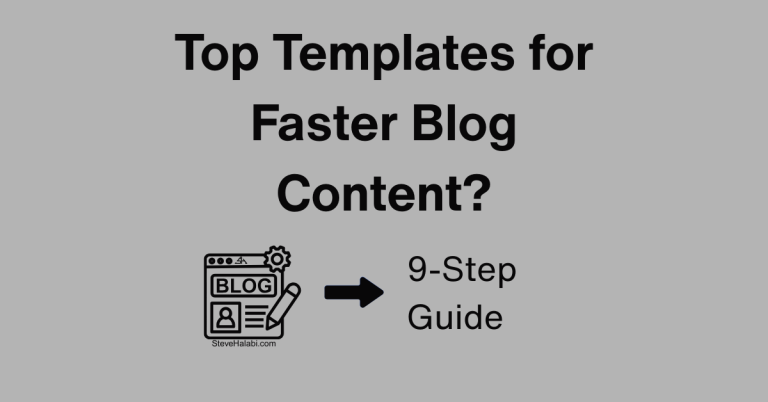How to Repurpose One Blog Post into 10+ Pieces of Content
Introduction:
Creating original content takes time, but getting the most out of your best content? That’s where smart bloggers win. Instead of writing something once and letting it fade, what if every blog post could work for you over and over again, across multiple platforms, in multiple formats?
That’s the power of content repurposing.
In this guide, you’ll learn how to:
- Turn one blog post into 10+ content assets
- Repurpose across video, email, social, and visual platforms
- Use free and AI-powered tools to automate the process
- Maximize your reach without doubling your workload
Whether you’re a solo blogger or building a content team, this is the strategy that helps you create less while publishing more and growing faster.
Disclosure: When you buy through a link on this site, I may earn a commission at no extra cost to you.
Step 1: Choose the Right Blog Post to Repurpose
Not every blog post is a good candidate for repurposing. To maximize the effectiveness of your efforts, begin by selecting a piece of content that is either already performing well or closely aligns with your current goals, such as list growth, affiliate sales, or thought leadership.
Ideal Blog Posts to Repurpose:
- Evergreen topics that won’t go out of date next month
- Posts with high traffic, strong SEO rankings, or solid engagement
- How-to or list-style posts that naturally break into parts
- Educational or pillar content that supports your overall brand messaging
What to Avoid:
- Time-sensitive news or updates
- Thin posts without much substance
- Posts already built around another repurposed format
Pro Tip: Utilize Google Analytics or Search Console to identify blog posts that receive steady traffic but have low engagement. These often make excellent repurposing candidates because they are visible but underutilized.

“Want to find your best repurposing opportunities fast? Try Ahrefs here to uncover high-traffic posts and hidden content gaps you can turn into fresh results!”
Get Started Here! Ahrefs
Step 2: Turn the Post into a Newsletter or Email Series
Email is one of the best places to repurpose your blog content, especially if you’re trying to stay consistent with your list without writing from scratch every week.
How to Repurpose for Email:
- Weekly Newsletter Feature: Pull the intro and top tips from your blog post into your next email, then link to the full post for deeper reading.
- Multi-Part Email Series: Break the post into 3-5 smaller lessons and schedule them as an automated welcome or nurture sequence. Each email focuses on one sub-topic or tip.
- From the Blog Recap Section: Use it as a footer in your regular newsletter, with a compelling hook and link: Missed this? Learn how I turn one blog post into 10+ pieces of content here.
AI Tool Tip: Use ChatGPT to condense or reformat your blog post into email-friendly copy. Just prompt it with: Turn this blog post into a 3-part email sequence that teaches readers how to repurpose content.
Pro Tip: Always tweak the tone for email. Keep it more personal, like you’re speaking to one reader, even if you’re using the same content from your blog.
“Want to turn one blog post into multiple emails in minutes? Try KIT (ConvertKit) here to easily create newsletters and automated sequences that keep your audience engaged!”
Get Started Here! KIT (ConvertKit)
Step 3: Create Social Media Snippets (Quotes, Tips, Stats)
Your blog post is already packed with value, now it’s time to break it into bite-sized social media content that’s easy to share and easy to schedule.
What to Pull from the Blog Post:
- Short quotes: Memorable lines or motivational insights
- Quick tips: One-liners or single-step instructions
- Stats or facts: Data-driven highlights or industry benchmarks
- Mini-stories or examples: Condense them into 2-3 sentence posts
Where to Post It:
- Instagram (image or carousel with caption)
- Facebook or LinkedIn (text posts or tip graphics)
- Twitter or Threads (multiple snippets as a thread)
Tool Tip: Use ChatGPT to extract social-ready tips. Prompt example: Turn this blog post into 5 Instagram captions and 3 tweet-sized tips.
Pro Tip: Add a short call to action at the end of each post. Something like – Want the full breakdown? Read the blog – helps drive traffic while keeping the post valuable on its own.
“Want to turn blog content into ready-to-post social updates? Try ContentStudio.io here to create, schedule, and publish snippets across all your social channels!”
Get Started Here! ContentStudio.io
Step 4: Design a Carousel or Infographic
Turning your blog post into a visual format is one of the most effective ways to reach new audiences, especially on platforms like Instagram, Pinterest, and LinkedIn. Carousels and infographics simplify complex content into a clean, engaging, scrollable format.
What to Use:
- Carousels: Break your blog post into 5 – 10 slides, each one covering one key tip, stat, or idea.
- Infographics: Turn the entire blog post into a vertical graphic summarizing the main points, stats, or process
Content to Pull:
- Step-by-step instructions
- Lists or roundups (tools, strategies, tips)
- Before-and-after insights
- Data visuals or comparison tables
Tool Tip: Use Canva’s carousel templates or infographic builders to quickly insert your content. You can duplicate the style for future posts, keeping your branding consistent.
Pro Tip: Carousels perform especially well when they lead with curiosity or value (10 Ways to Repurpose a Single Blog Post) and conclude with a clear takeaway or a call-to-action (CTA).
Canva Pro is ideal for bloggers who want to create visually appealing content quickly. With premium templates, brand kits, and resizing tools, you can turn your blog into scroll-stopping content, even if you’re not a designer.
“Want to turn your blog into eye-catching visuals fast? Try Canva here to design carousels and infographics that grab attention and drive clicks!”
Get Started Here! Canva
Step 5: Record a Short Video or Reel Based on the Blog’s Main Idea
Short-form video is one of the fastest ways to boost visibility in 2025. With just 30-60 seconds of content, you can take the core message of your blog post and deliver it in a more dynamic, personal, and algorithm-friendly format.
Video Ideas to Try:
- Recap the top 3 tips from your blog post in a face-to-camera video
- Share a problem-solution scenario based on the blog topic
- Use text-only Reels or TikToks with music, overlaid tips, and a call to action
- End the video by inviting viewers to read the full post on your blog or grab the free checklist.
Script Shortcut: Use your blog post intro as the hook and condense the main points into bullet-style delivery. Keep it fast-paced and focused on a single takeaway.
Tool Tip: Use Pictory or InVideo to quickly generate video snippets from your written blog content. These tools can automatically convert your blog into scenes, captions, and voiceovers, no prior editing experience needed.
Pro Tip: Make your first video a recurring template. For example: One blog post, three tips, 60 seconds. It’s easy to replicate and trains your audience to expect valuable, fast content.
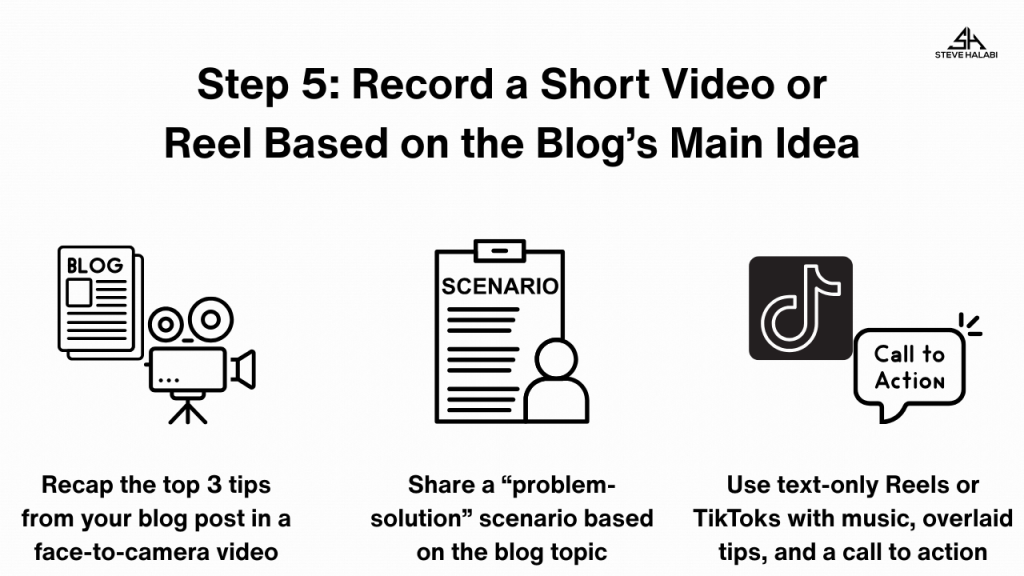
“Want to turn blog posts into engaging short videos in minutes? Try InVideo here to quickly create reels with captions, music, and your key tips!”
Get Started Here! InVideo
Step 6: Create a YouTube or Tutorial-Style Walkthrough
If your blog post covers a multi-step process, tool comparison, or strategy breakdown, it’s a perfect fit for long-form or tutorial-style video content. YouTube is an ideal platform for this, especially if you’re looking to build authority, boost search visibility, or promote affiliate products.
Ways to Repurpose into Video:
- Screen record yourself walking through each step of the blog post
- Create a voiceover tutorial using slides or a visual outline
- Host a deep dive video based on your blog’s main topic
- Use the blog as a script foundation and add personal insights or bonus tips
Ideal Post Types for YouTube Repurposing:
- How to tutorials
- Tool or product comparisons
- List-style posts (10 ways to…)
- Strategy breakdowns (email funnels, SEO plans)
Tool Tip: Descript makes it easy to record and edit tutorial-style content using only your written blog post and a webcam or slides. You can even edit your video by editing the transcript, which simplifies everything for first-time creators.
Pro Tip: End your video by referencing a free download, checklist, or content upgrade based on the blog. It creates a seamless path from viewer to subscriber and builds your list with every upload.
Descript is a great tool for converting written content into video tutorials. It handles recording, editing, transcribing, and even creating audiograms, all from a single dashboard. Ideal for bloggers seeking to expand their content into video without hiring an editor.
“Want to turn blog posts into polished tutorial videos without complex editing? Try Descript here to record, edit, and publish videos just by working with text!”
Get Started Here! Descript
Step 7: Break the Post into Micro-Content for Twitter or Threads
X (formerly Twitter) and platforms like Threads thrive on fast, punchy insights, and your blog post is already full of them. Repurposing blog content into micro-content threads is an effective way to establish authority, drive traffic, and maintain high visibility with your audience.
Ways to Repurpose into Threads or Tweets:
- Create a thread intro using your blog post’s title or hook.
Example: How I turn one blog post into 10+ pieces of content, and how you can too - Break each blog tip or step into its own tweet within a thread
- Add visuals, screenshots, or short video clips to boost engagement
What to Share:
- Step-by-step walkthroughs
- Quick tips from the post
- Key takeaways or aha moments
- Stats or surprising facts mentioned in the blog
Tool Tip: Use ChatGPT to reformat blog content for Twitter. Prompt example: Turn this blog post into a 7-tweet thread that teaches bloggers how to repurpose their content.
Pro Tip: End your thread with a CTA, such as: For a full breakdown, visit the blog post here [link]. This strategy drives blog traffic without being overly promotional.
If your blog post includes a recommended tool, highlight it mid-thread as a helpful resource. Readers appreciate tools that solve the problem being discussed, especially when it’s positioned as what I use to make this easier.
“Want to turn your blog into high-engagement threads in minutes? Try ChatGPT here to quickly reformat your content into punchy tweets and step-by-step threads!”
Get Started Here! ChatGPT
Step 8: Convert the Post into a Lead Magnet or PDF Download
One of the most effective ways to repurpose a blog post is to transform it into a lead magnet, which your audience can download in exchange for their email address. Whether it’s a checklist, cheat sheet, or comprehensive guide, your blog post already has a solid foundation.
Repurposing Ideas:
- Turn a step-by-step blog post into a printable checklist or worksheet
- Convert a tool roundup into a PDF resource guide
- Reformat a long blog post into a quick-start guide or blueprint
- Add visuals and formatting to create a branded mini eBook
Where to Offer It:
- Content upgrade section within the blog post itself
- Pop-up form or exit-intent prompt
- Landing page promoted via email or social media
- As part of a welcome email sequence or blog resource library
Tool Tip: Use Canva or Visme to quickly format your content into a professional-looking PDF. Drop in your blog headings, simplify the copy, and add a few branded visuals, it’s ready to go in under an hour.
Pro Tip: Create a companion lead magnet for every blog post you publish. Even something as simple as a one-page checklist can increase email opt-ins and foster a stronger relationship with your audience.
Canva Pro makes designing lead magnets effortless. With prebuilt templates, drag-and-drop layouts, and brand kits, you can turn your blog content into premium downloads that impress your readers and grow your list.
“Want to turn blog posts into lead magnets that grow your list? Try Canva Pro here to design professional, branded PDFs in minutes!”
Get Started Here! Canva Pro
Step 9: Use the Content as a Podcast Topic or Audio Summary
If you’re building a personal brand or aiming to deepen audience trust, audio content is a natural next step. Repurposing your blog post into a podcast episode, or even just a brief audio summary, allows your readers to consume your content in a more personal and convenient format.
Repurposing Ideas:
- Record a solo podcast episode walking through the blog topic
- Create a Quick Tips audio segment based on your main points
- Share a personal story or behind-the-scenes experience related to the post
- Use it as a segment for a newsletter or private audio feed
Why It Works:
- Reaches audio-first audiences who prefer listening while multitasking
- Gives your voice a literal platform, increasing connection and credibility
- Adds variety to your content ecosystem with minimal extra effort
Tool Tip: Use Descript to record and edit your audio by simply editing the transcript. You can clean up filler words, trim pauses, and even auto-generate captions or audiograms for sharing clips on social.
Pro Tip: Keep it simple – start with 5-10 minute audio breakdowns of your best blog posts. You can even embed these on the blog page itself to increase time on site and give readers more flexibility.
Descript is ideal for bloggers who want to explore podcasting without the complexity. It makes recording, editing, and publishing audio content simple, even if it’s your first time behind the mic.
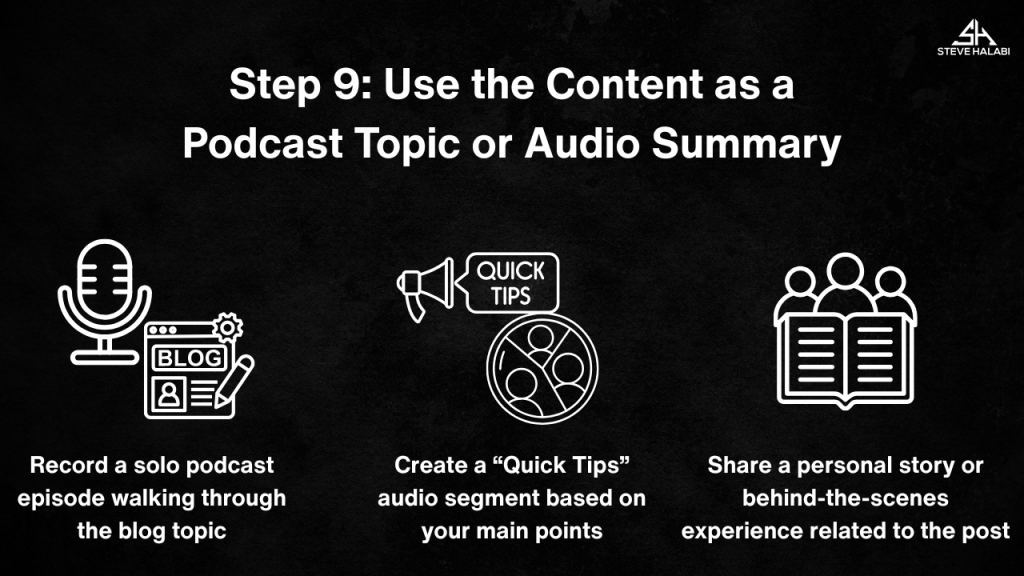
“Want to turn blog posts into podcast episodes or audio snippets fast? Try Descript here to record, edit, and share audio just by working with text!”
Get Started Here! Descript
Step 10: Build an Internal Linking Cluster from the Original Post
Repurposing isn’t always about creating new formats, it’s also about strategically reinforcing your existing content. One of the highest-ROI ways to repurpose a blog post is by using it as the foundation for a cluster of related posts, all linked together internally.
How to Build a Content Cluster:
- Identify subtopics or supporting ideas within the original post
- Create short, focused blog posts that expand on each of those ideas
- Link back to the original “pillar” post, and between the subtopics
- Use consistent anchor text that matches your keyword strategy
Why It Works:
- Improves SEO by building topic authority and content depth
- Keeps readers on your site longer through strategic navigation
- Gives you a never-ending stream of content ideas that reinforce your brand
Tool Tip: Use Notion or Trello to build a content cluster map. Start with your core post, then branch off with 5-7 spinoff ideas you can schedule over the next month.
Pro Tip: Update your original blog post after you’ve published the new content. Add links to the supporting posts to create a hub-and-spoke structure that both search engines and your readers will love.
Notion is perfect for planning your internal linking strategy. You can build visual maps, content calendars, and keyword checklists in one dashboard, ideal for bloggers looking to grow strategically without losing track of what’s connected.
“Want to plan and track your blog’s content clusters with ease? Try Notion here to map topics, link posts, and keep your SEO strategy organized!”
Get Started Here! Notion
Conclusion: Work Smarter by Repurposing Your Best Content
You don’t need to publish more to grow faster, you just need to use what you’ve already created more strategically. With one well-written blog post, you now have the roadmap to generate 10 (or more) new content assets that extend your reach, deepen your authority, and save you hours each week.
Repurposing is the ultimate time-leverage strategy for content creators. Whether you’re trying to grow your email list, expand into video, or stay active on social media without burning out, this system provides everything you need to stay visible with less effort.
Ebook: Repurpose Like a Pro

Transform a Single Blog Post Into Multiple Pieces of Content That Expand Your Reach
You don’t always need new ideas, you need to use the content you already have in more ways. This eBook shows you how to break one blog post into multiple social posts, videos, graphics, and more, so you can reach more people without doubling your workload.
Here’s what you’ll learn inside:
- How to identify the best blog posts to repurpose for maximum impact
- Ways to adapt blog content for different social platforms and formats
- Tools that make repurposing faster and easier
- A repeatable system for turning one post into a month’s worth of content
This eBook is for you if:
- You’re ready to grow your reach without constantly starting from scratch
- You want more visibility from the content you’ve already created
- You struggle to keep up with posting on multiple platforms

